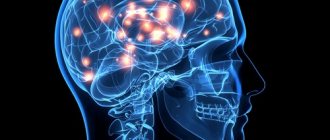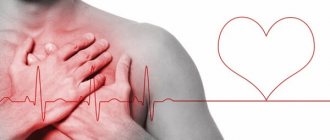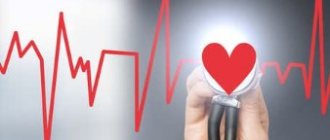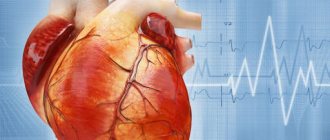Almost every young person has encountered situations when the heart begins to beat faster than usual, especially during physical exertion, emotional outbursts, and excitement. Many conscripts are interested in advance, before undergoing a medical examination, when they can count on complete exemption from the upcoming military service with this pathology.
The decision of the military registration and enlistment office will be made after a detailed study of the diagnosis, so each case is considered individually.
Will arrhythmia become an obstacle to service in 2022?
Everyday life in the army, filled with increased physical and psychological stress, becomes a serious test for some.
For young men aged 18-27 years who have pathologies associated with cardiac activity, the question of fitness is especially relevant during the conscription campaign.
The disease is divided into different types, depending on the classification: the recruit will go along with the rest of the army or will receive a deferment.
What is taken into account when assigning a fitness category to a young man diagnosed with arrhythmia:
- the degree of the disease;
- frequency of recorded attacks;
- stage: persistent remission, exacerbation;
- undergoing the necessary diagnostics;
- detected concomitant diseases and complications.
It is worth noting that it will be possible to completely avoid service only in case of serious violations that are documented.
In any case, hoping to receive a non-conscription category, it is better for a young man to take care in advance of collecting medical certificates, extracts, research results, including an ECG.
Features of the examination
If a young person has congenital or acquired heart defects or other disorders of the cardiovascular system, this is usually indicated in his medical record. Members of the medical commission, of course, will not miss such records, because we are talking about a serious health problem; extreme physical and mental stress can aggravate the young man’s condition.
What is the difficulty? There is no cardiologist on the medical commission for conscripts. All young people are examined in turn by the following narrow and general specialists:
- therapist,
- dentist,
- ophthalmologist,
- otolaryngologist,
- surgeon,
- neurologist,
- psychiatrist.
But there is no cardiologist on the list. Only those young people who have previously been diagnosed with heart problems undergo it. The rest are usually allowed to serve without additional examination, if there are no visible grounds for it. A rapid heartbeat due to anxiety in this case is not a reason for referral to a cardiologist.
It so happens that our conscripts in most cases strive to avoid military service. And the military registration and enlistment office, accordingly, is interested in accepting as many young people as possible. Therefore, the medical commission does not examine young men very carefully, relying on the fact that serious pathologies would have been known for a long time, and if the deviations are minor, then there is no threat.
It is no secret that a medical examination at the military registration and enlistment office is more of a formality than a full and thorough examination.
However, it may happen that a young person has a pathology of the heart and blood vessels, but it is still hidden. And it can only be identified through a special, thorough examination. What to do in this case, how to prevent being sent to a service where the risk of exacerbation and attack increases significantly?
Usually, heart problems make themselves felt one way or another. Symptoms that should alarm young people of military age:
- frequent or periodic increase in heart rate for no apparent reason;
- uneven heartbeat, freezing of the pulse during physical exertion or excitement;
- dyspnea;
- pallor;
- pain behind the sternum, sometimes radiating to the arm and under the shoulder blade;
- state of anxiety, panic.
Even if only one of the listed symptoms is detected, if it bothers you only from time to time, it is better to play it safe and get yourself examined by a cardiologist. To begin with, the doctor will write a referral for clinical urine and blood tests and an ECG. After receiving the results, it will be possible to judge whether there are grounds for further diagnostic procedures.
Helpful advice: the results of a private examination with a cardiologist, symptoms and complaints must be recorded in the medical record. They take her with them to the military registration and enlistment office for a medical examination for conscripts and show her to the therapist. Based on the records, the young man is sent for examination by an independent cardiologist. The commission then decides to remove the young person from compulsory service or assign him status.
There is no cardiologist on the list of mandatory doctors for the medical board at the military registration and enlistment office; if necessary, you need to undergo it yourself.
Are sinus arrhythmia and the army compatible?
The most common type of pathology among conscripts is sinus arrhythmia. In most cases, this form of the disease is not a contraindication to full performance of military duty.
Minor discomfort associated with sometimes rapid heartbeat, slightly deviating from normal values, will not be considered by the medical commission at the military registration and enlistment office as a reason for deferment or release. Usually, when asked by a future defender whether they are recruited into the army with sinus arrhythmia, one can hear a positive answer.
It is believed that the physical exercises included in the program, adherence to a daily routine, a balanced diet and a healthy lifestyle will help strengthen the body and get rid of pathology.
The possibility of serving is also affected by the degree of progression of the disease, so it is impossible to say definitively whether someone with this type of arrhythmia will be accepted into the army.
You can hope to avoid conscription only if serious violations are identified:
- constantly occurring attacks of rapid or slow heart rate, documented;
- the presence of serious concomitant complications requiring treatment, control, and medical supervision.
Having proven a possible threat to the health of the recruit and incompatibility with the army at this stage, the guy receives category G and a temporary deferment for 6 or 12 months.
For more information about what category G means on a military ID, read our article.
After undergoing the necessary treatment, the young man must appear for a re-examination during the next conscription campaign, where a verdict will be made as to whether the guy with this stage of arrhythmia will be drafted into the army.
If there are obvious improvements, the future soldier is sent to the unit; if the therapy does not bring a positive result, the issue of extending the deferment or being assigned a non-conscription category is decided.
What other categories can a conscript with arrhythmia receive?
If the initial examination shows that the condition of a conscript suffering from arrhythmia is not critical, he may be assigned the status “G” or “B”. Status “G” means that the young man cannot be recruited until he undergoes the necessary examination, and, if necessary, emergency treatment. After this, his suitability for military service will be reviewed again. That is, this status provides only a temporary deferment from service, but not complete removal.
Status "B" does not provide for deferment. The young man will be called up, but he will serve only in peacetime and will be in rear positions, in benign conditions. If a young man's well-being changes for the worse, his status may be reviewed by a medical commission.
Atrial fibrillation and ventricular arrhythmias
In addition to sinus, there are other types of disease that are clearly incompatible with the army, which are prescribed in Article 44 of the “Schedule of Diseases.” After studying the medical record and research results, the doctors who are part of the military medical commission decide whether to take the guy with the detected rhythm disorder into the army or leave him in civilian life.
Young people with serious diagnoses are not called up for military service:
- atrial fibrillation and arrhythmia;
- ventricular extrasystoles in a pronounced form.
Constantly occurring attacks, regular disturbances in cardiac activity, requiring drug treatment, after which relapses occur, will become the basis for enlisting in the reserve or declaring the guy unfit for the army.
The letter “B” affixed to a military ID will mean that in peacetime the young man should not be afraid of receiving summonses. The letter “D” exempts the young man from conscription for life.
The category that determines the future of a particular citizen is assigned according to the list of “Schedule of Diseases”.
Read more about what military fitness categories mean here.
What diseases does it manifest itself in?
So, arrhythmia itself never occurs. It is important to establish the disease against which it develops. It is the underlying illness that determines whether a conscript will be accepted into the army or not. The conscript will receive a “white” ticket if, after the examination, the following diagnoses are confirmed:
- Rheumatic fever (Sokolsky-Buyo disease) in combination with heart failure. With this disease, muscle tissue becomes inflamed, which reduces their contractile functions, and blood circulation is impaired. As a result, frequent and prolonged attacks of arrhythmia occur, during which the patient requires medical supervision.
- Acute heart failure with severe arrhythmia.
- Dysfunction of the cardiac conduction system in severe form.
- Acquired or congenital heart defects.
- Incomplete closure of the mitral valve - prolapse.
- Cardiosclerosis is an extremely dangerous pathological process in which the muscle tissue of the heart is replaced by connective tissue.
- Cardiac ischemia in an advanced stage.
- Arterial hypertension in the third stage.
Any of the listed pathologies is the basis for assigning a category “D” (“White Sheet”) to a young person.
Extensive physical exertion and exposure to difficult living and climatic conditions, psycho-emotional stress can provoke an exacerbation, attack and a sharp deterioration in health
Arrhythmia complications incompatible with military service
You should undergo all examinations to identify the presence or absence of concomitant diagnoses and possible complications.
Often complaining of periodic attacks in which a slow or, on the contrary, excessively rapid heartbeat is noted, young people are not aware of the presence of other serious diseases.
The fact is that arrhythmia may not be a separate pathology, but a symptom of other ailments that imply a non-vocational category:
- ischemia;
- neuroses;
- obesity;
- heart defects;
- mitral valve prolapse.
Read more about whether people with mitral valve prolapse are accepted into the army.
Having discovered diagnoses that pose a serious threat to the health, and in some cases the life of a young man, the doctors of the military registration and enlistment office will not ignore the dangerous pathology, releasing him from the army.
The main thing is to prepare documents in advance that can confirm the disease when going for a medical examination.
Having doubts about the diagnosis, doctors at the military registration and enlistment office issue a referral for additional examination of the conscript.
When people with arrhythmia are not accepted into the army
Arrhythmia can cause medical withdrawal from compulsory service if it is one of the signs of the following heart pathologies:
- Paroxysmal tachycardia.
- Pronounced ventricular extrasystole.
- Slack sinus syndrome.
- Atrial fibrillation.
The latter is considered especially dangerous and insidious. All of these pathologies are characterized by attacks that manifest as a sharp deterioration in the patient’s well-being. Without emergency medical care, myocardial infarction may develop and death may occur. For this reason, the conscript receives an “unfit” mark on his card.
This status can be changed to “limited fit” if the attacks have become less frequent, are less pronounced and the patient’s general condition is satisfactory. The diagnosis of arrhythmia is not a final medical disqualification from military service. A man should be examined and confirmed every few years.
If improvements are noted, the fail status changes. That is, over time, under certain circumstances, even after the initial removal from service due to arrhythmia, in the end you will still have to go to serve.
Probability of avoiding service with arrhythmia
Except for cases where pronounced symptoms indicate a complex disease or the presence of concomitant diagnoses, evading military service is not so easy.
Attempts to mislead members of the medical-military commission are fraught with trouble: the law provides for serious punishment for “deviators,” ranging from impressive amounts of fines to criminal liability.
Verbal complaints about rapid rhythm without documentary evidence can be ignored and considered as a result of excitement. It is pointless to pretend in front of experienced doctors, and you should also not look for illegal ways to “slope” in the form of buying a military personnel or other dubious options.
Not wanting to undergo the tests of difficult everyday life in the army, a rational solution would be to turn to professionals in this field.
What troops can you serve in?
If a conscript with a mild form of arrhythmia is declared fit without restrictions, assignment to the troops will be made randomly.
If limited fitness has been assigned, next to the main category a number must be indicated indicating the group of troops to which this category applies. Categories “B” are as follows: “B-1”, “B-2”, “B-3” and “B-4”.
Arrhythmia almost always falls into the “B-3” category. This is the most extensive category of fitness, because it includes most conscription diseases without significant impairment of functions. With fitness category “B-3” they are called to:
- drivers of infantry fighting vehicles and armored personnel carriers;
- missile launch installations;
- internal troops of the Ministry of Internal Affairs;
- pipeline troops and other chemical work;
- control and operation of anti-aircraft missile systems.
Classification of pathological tachycardia
There are two types of pathological tachycardia:
- sinus;
- paroxysmal.
The sinus form of pathology is the most common. It occurs due to disruption of the sinus node, the most important regulator of heart rhythm. There can be many reasons for this: myocardial pathologies, infectious diseases, disruptions in the endocrine system, brain injuries. Pathology is easily determined using an ECG, but to eliminate it it is necessary to identify the cause of sinus node dysfunction. Sinus tachycardia is not accompanied by a rhythm disturbance (arrhythmia).
Tachycardia is easy to detect using an electrocardiogram, but it is not always easy to identify its cause
The paroxysmal form of tachycardia causes sudden attacks of significant increase in heart rate - heart rate can reach 150 or even 250 beats per minute. At this moment, the person feels severe discomfort, agitation, and weakness. Such paroxysms are usually accompanied by a sharp decrease or increase in pressure - loss of consciousness or presyncope is possible. There are two forms of pathology:
- ventricular;
- supraventricular
Ventricular tachycardia usually occurs in people who have had a heart attack, suffering from coronary artery disease, myocarditis, or cardiomyopathies. The cause of the disease is dysfunction of parts of the nervous system localized in the ventricles. It can also be a consequence of congenital anomalies.
Supraventricular tachycardia occurs as a result of disruption of the sympathetic nervous system or abnormalities in the structure of the heart.
Diagnostics
Traditionally, arrhythmia is diagnosed by a cardiologist. This specialist must not only identify the disease, but also determine its etiology, type and degree of neglect. The following studies are used for this:
- ECG. This is a standard procedure that allows you to determine the possible causes of arrhythmia, monitor the frequency of ventricular contractions and record the heart rhythm.
- Daily Holter monitoring. This is a painless test that records the work of the heart and deciphers the data obtained on a computer. Such an examination allows us to identify hidden interruptions in the functioning of the heart that occur during excitement, walking, or rest.
- Thyroid examination. Used for differential diagnosis.
- Ultrasound of the heart.
- Exercise test.
What is tachycardia
Tachycardia is an increase in heart rate to more than 90 beats per minute in a horizontal position and over 100 in a vertical position.
An increase in heart rate is an absolutely normal physiological reaction of our body. You feel a racing heart every time after a quick climb up the stairs, a heavy dose of coffee or severe stress. In these cases, the accelerated work of the heart is due to the need to supply working muscles with oxygen or the release of adrenaline, and is not considered a pathology. Based on the above, there are two types of tachycardia:
- physiological;
- pathological.
Physiological tachycardia occurs as a result of natural causes - as a response of our body to external or internal stimuli. This could be physical activity, fear, stress, sexual arousal, increased body or environmental temperature. Rapid heartbeat is observed after a heavy meal, drinking coffee or alcohol, the pulse quickens during inhalation and slows down when exhaling. Physiological tachycardia is considered completely normal and natural - it is short-term and goes away on its own, without medical help or medication.
Tachycardia is an increase in heart rate, which most often occurs due to natural causes.
Pathological tachycardia is a consequence of failures and disturbances in the functioning of the body. The following diseases can cause it:
- damage to the sinoarterial node of ischemic, toxicological or infectious nature;
- thyrotoxicosis;
- heart failure;
- anemia;
- mitral valve prolapse (MVP);
- myocarditis;
- heart defects;
- hypertension;
- vegetative-vascular dystonia.
Pathological tachycardia is often accompanied by pain in the heart, difficulty breathing, dizziness, and pressure surges. The above symptoms are usually a sign of serious heart problems that require comprehensive study and treatment.
Pathological tachycardia poses a serious danger to human health. It reduces the efficiency of the heart - blood simply does not have time to fill the ventricles normally, which lowers blood pressure and impairs blood supply to organs. Heavy load and deterioration in oxygen supply have a negative impact on the myocardium itself, which can lead to coronary artery disease and heart attack.
If you have tachycardia, you should not consume caffeine and other stimulants; cigarettes and alcoholic beverages are prohibited. Heavy physical activity, overeating, and emotional distress are contraindicated for the patient. With this pathology, proper sleep, a healthy diet, and regular visits to a cardiologist are important. Also, self-medication is absolutely contraindicated for tachycardia.
Causes of sinus arrhythmia
Seemingly healthy people may also be at risk for sinus arrhythmia. By eliminating the causes, you can get rid of the disease. It can be provoked by excessive physical activity and even stress.
Sinus arrhythmia, which occurs for no apparent reason, in most cases appears in insufficiently active young men
Causes of sinus arrhythmia:
- deficiency of Ca, Mg and K;
- intoxication;
- bad habits (wrong lifestyle);
- oxygen deficiency;
- side effects from medications;
- diseases in the endocrine organs;
Sinus arrhythmia is quite common among teenagers, as well as boys and girls aged 18-25. Without paroxysmal heart rhythm disturbances, this disease is not a reason for removing men from performing their civic duty. In addition, such ECG results do not in any way interfere with exercise.
In such cases, experts recommend taking sedatives along with vitamin complexes. It is necessary to give up bad habits, eat right and temporarily reduce the intensity of physical activity.
Procedure for passing a medical examination
The pathological form of tachycardia is one of the common problems encountered in young men of military age.
A conscript who knows that he has health problems must come to the military registration and enlistment office, bringing with him the entire list of documents confirming the presence of the disease. Important documents include certificates, clinical tests, examination results, confirmation of periodic visits to the doctor.
The examination at the military registration and enlistment office is carried out in accordance with the available documents. If controversial issues arise, as well as in the absence of the necessary medical certificates and the conclusion of the attending physician, the conscript is sent for additional examination. The results of the re-examination and examination are considered final for the medical commission to make a verdict.










